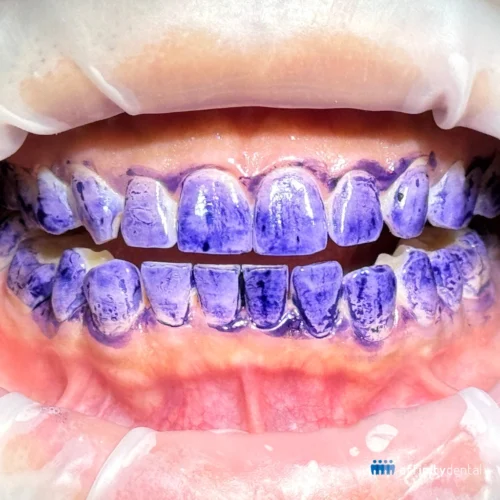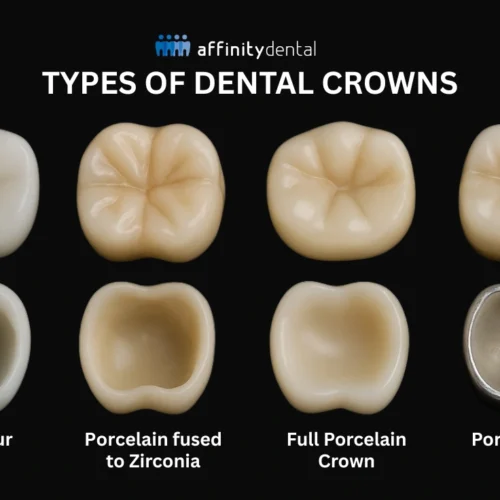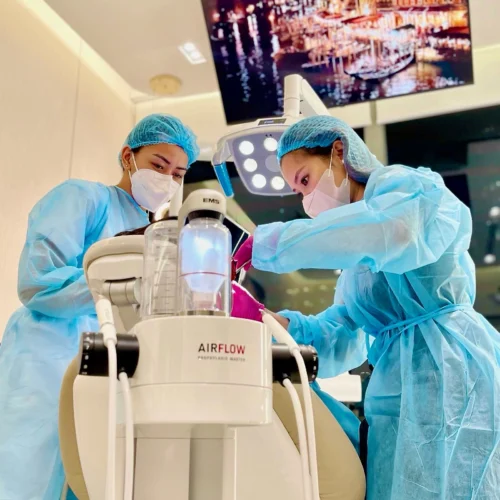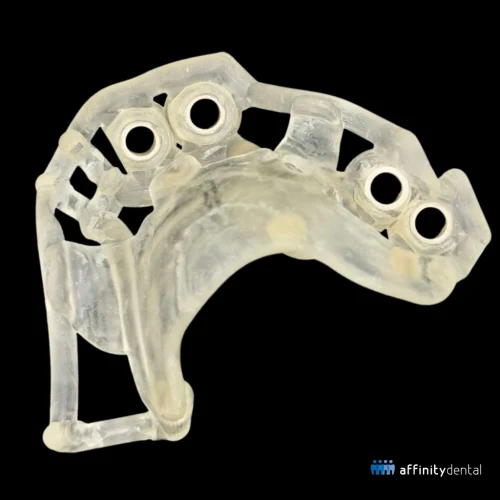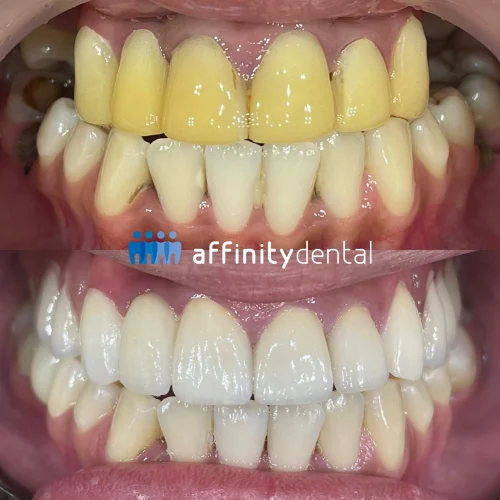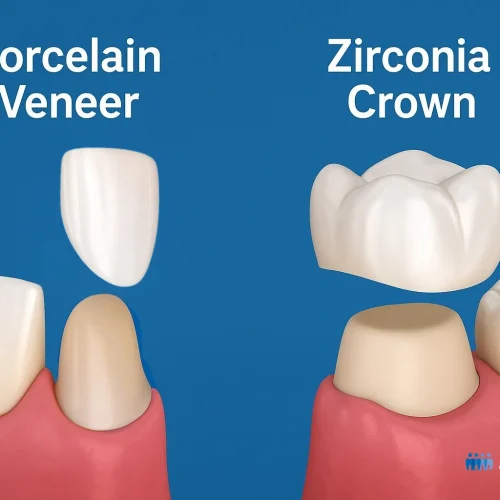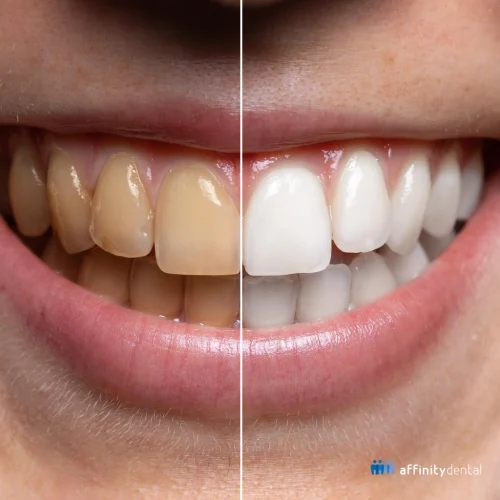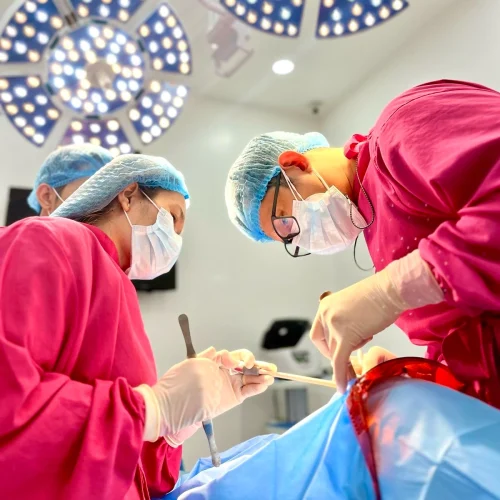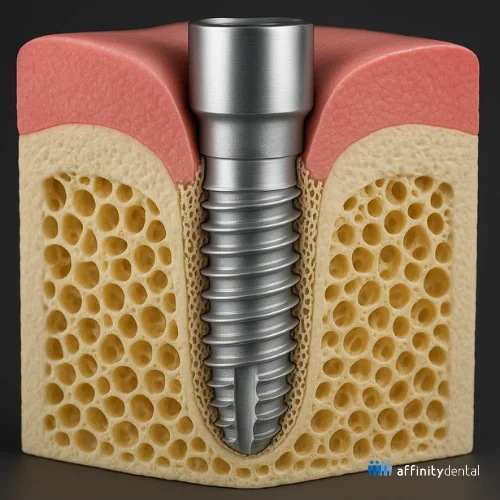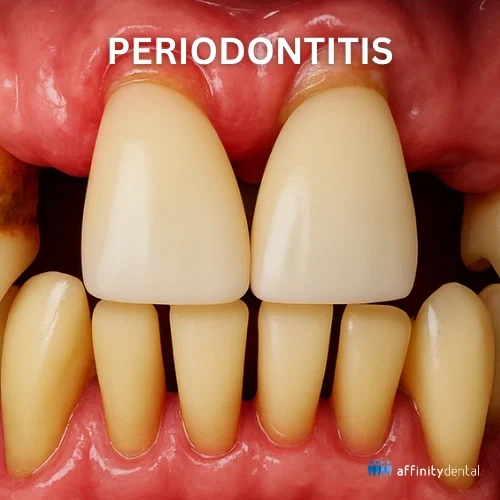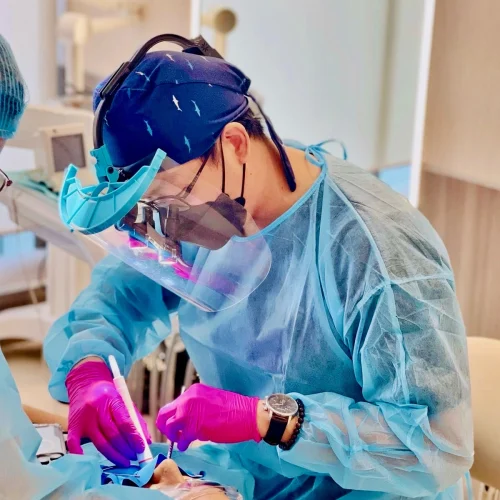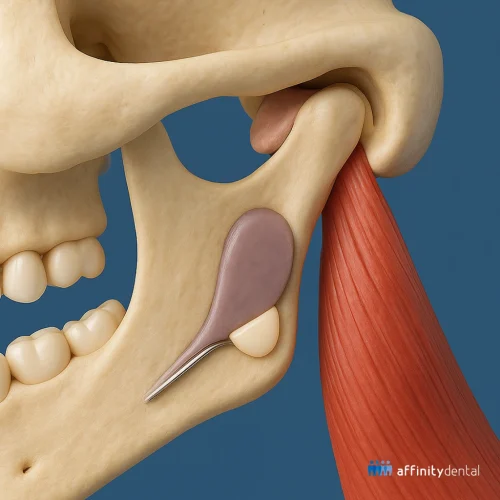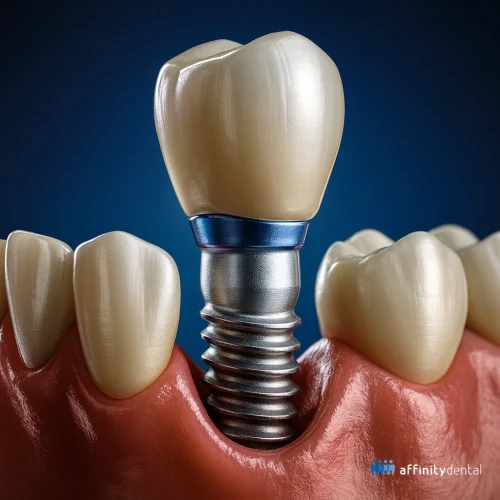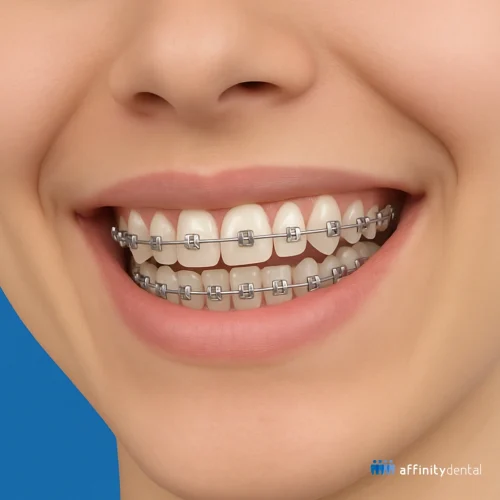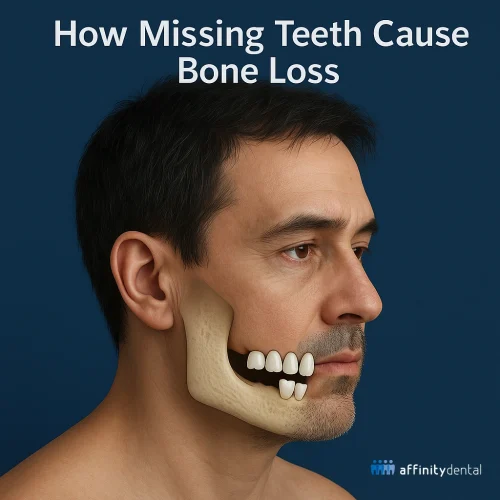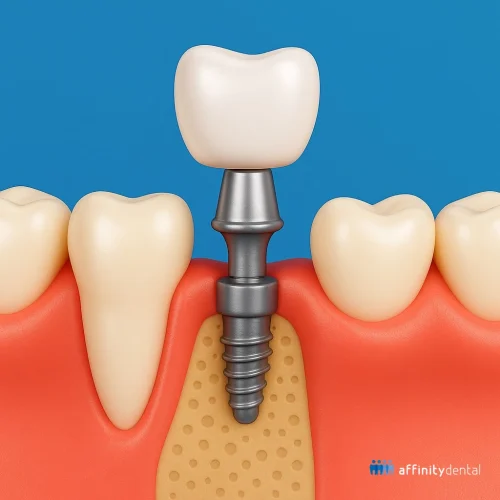Osseointegration: How Dental Implants Become Part of You
A Natural Bond Between Bone and Implant
When people think of dental implants, they often picture the visible crown that looks like a tooth. But the real magic happens underneath the gums, inside the bone.
This process is called osseointegration. In simple terms, it is when your natural bone grows around a titanium implant and locks it in place—just like how bone supports your natural teeth.
Without osseointegration, dental implants would simply not work.
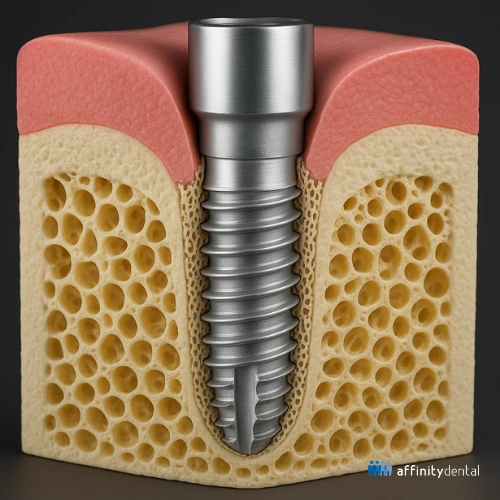
Why Osseointegration Matters
Think of a dental implant as a screw placed into the jawbone. On its own, it would remain loose and unstable. But with osseointegration, the bone and implant fuse together, making the implant a permanent part of your mouth.
That’s why implants don’t move or slip like dentures. They feel and function like natural teeth—because your body has accepted them as its own.
👉 Important note: If an implant does not integrate with the bone, it will most likely fail. Clinical research consistently shows that implant success is closely tied to proper osseointegration, with survival rates of over 90–95% in healthy patients when the process is successful (Brånemark et al., 1977; Albrektsson et al., 1981).
The Role of Titanium
Most implants are made of titanium, a material that is both strong and biocompatible. Your body doesn’t reject it—instead, bone cells naturally attach to it.
Over decades of research, titanium has proven to be the most reliable material for osseointegration, which is why it remains the standard in implant dentistry today.
Timelines of Osseointegration: What to Expect
Osseointegration doesn’t happen overnight. It is a gradual process, and every patient heals at a slightly different pace. Here’s a general timeline:
- Placement (Day 0)
- The oral surgeon places the titanium implant into the jawbone under local anesthesia (or sedation for more complex cases).
- The gum is closed around the implant to allow undisturbed healing.
- Healing Phase (2–4 Weeks)
- In the first weeks, the body begins its natural healing response. Blood vessels form, and bone cells start to migrate toward the implant surface.
- Patients usually don’t feel anything unusual during this time. Mild swelling or tenderness after surgery resolves within days.
- Osseointegration (3–6 Months)
- Over the following months, bone tissue gradually fuses with the implant threads.
- By the end of this period, the implant is firmly anchored and ready to support a crown, bridge, or denture.
👉 Studies show that full osseointegration generally occurs in about 3–6 months, depending on bone quality and the patient’s overall health. Immediate or early loading of implants is possible in select cases, but only after careful evaluation.
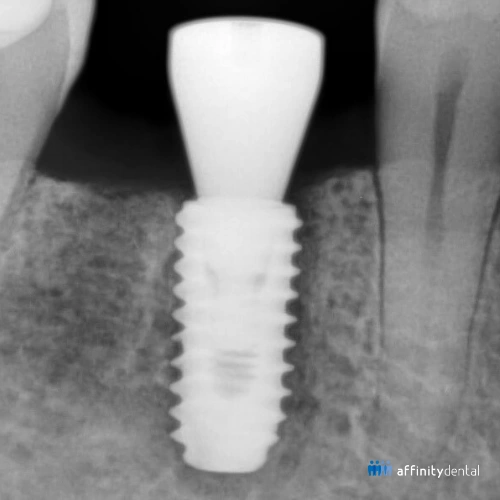
What If There Isn’t Enough Bone?
Not all patients have sufficient bone to support an implant right away. Bone loss can happen due to:
- Long-standing tooth loss
- Gum disease (periodontitis)
- Trauma or infection
- Natural bone resorption over time
When there isn’t enough bone, dentists often recommend a bone graft.
Bone Grafting for Implants
A bone graft provides a strong foundation for osseointegration by rebuilding lost bone volume. Depending on the case, this may involve:
- Socket preservation at the time of extraction
- Sinus lift procedures in the upper jaw
- Ridge augmentation using grafting materials or membranes
Clinical studies show that grafting significantly improves the long-term success of implants by ensuring there is enough healthy bone for proper osseointegration (Jensen & Terheyden, 2009; Aghaloo & Moy, 2007).
At Affinity Dental Clinics, our oral surgeons perform bone grafting procedures when needed, guided by CBCT scans to ensure precision and safety.
Why Do You Need Bone Grafts for Dental Implants?
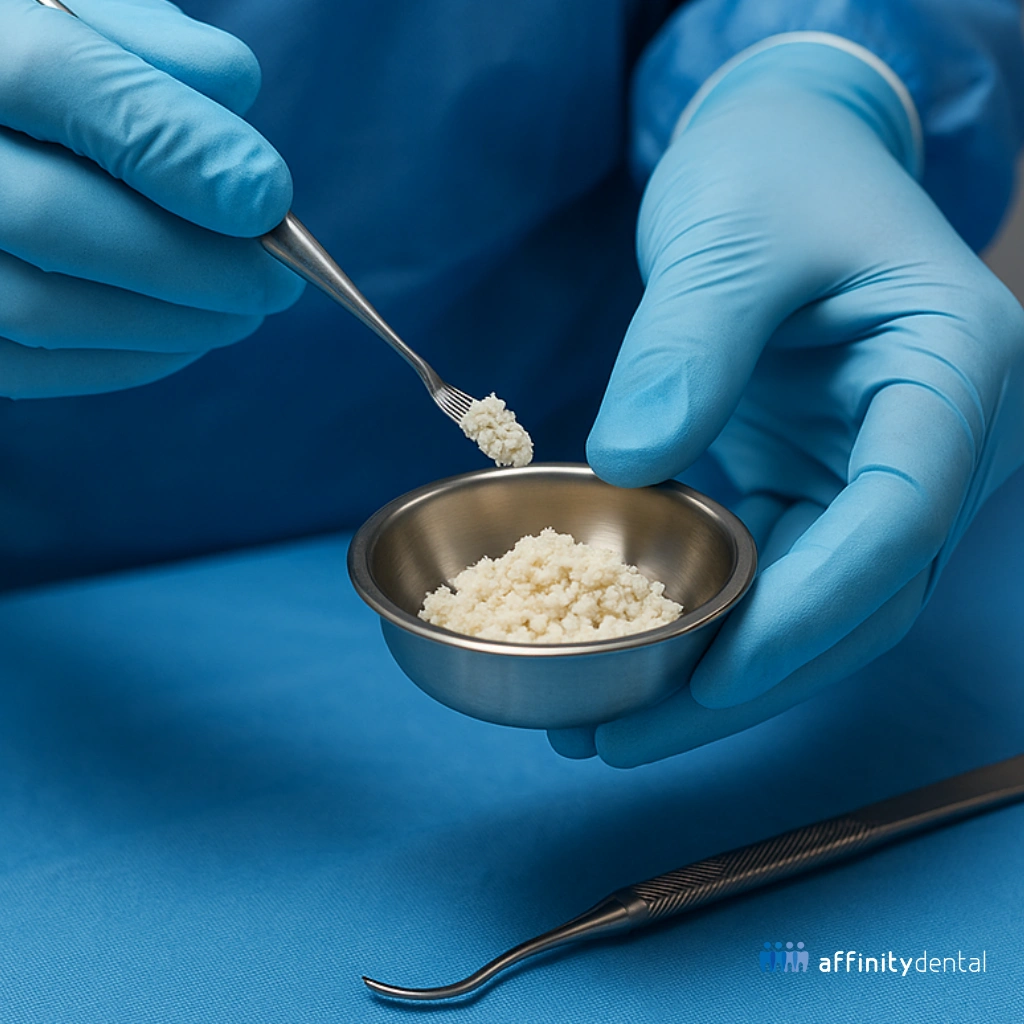
Factors That Affect Osseointegration
While modern implant success rates are high, some factors can influence healing:
- Bone quality and density – Stronger, denser bone integrates faster.
- General health – Smoking, diabetes, or osteoporosis can slow healing.
- Oral hygiene – Clean, healthy gums prevent infection around the implant.
- Surgical precision – Using digital planning and surgical guides improves outcomes.
Am I a Candidate for Dental Implants?
Why Osseointegration Is Life-Changing
Because of osseointegration, implants do more than replace teeth. They restore confidence, comfort, and function. Patients often report that their implants feel so natural that they forget which tooth is real and which isn’t.
Even better—implants stimulate the jawbone, preventing the bone loss that usually happens when teeth are missing. This helps preserve facial structure and a youthful appearance.
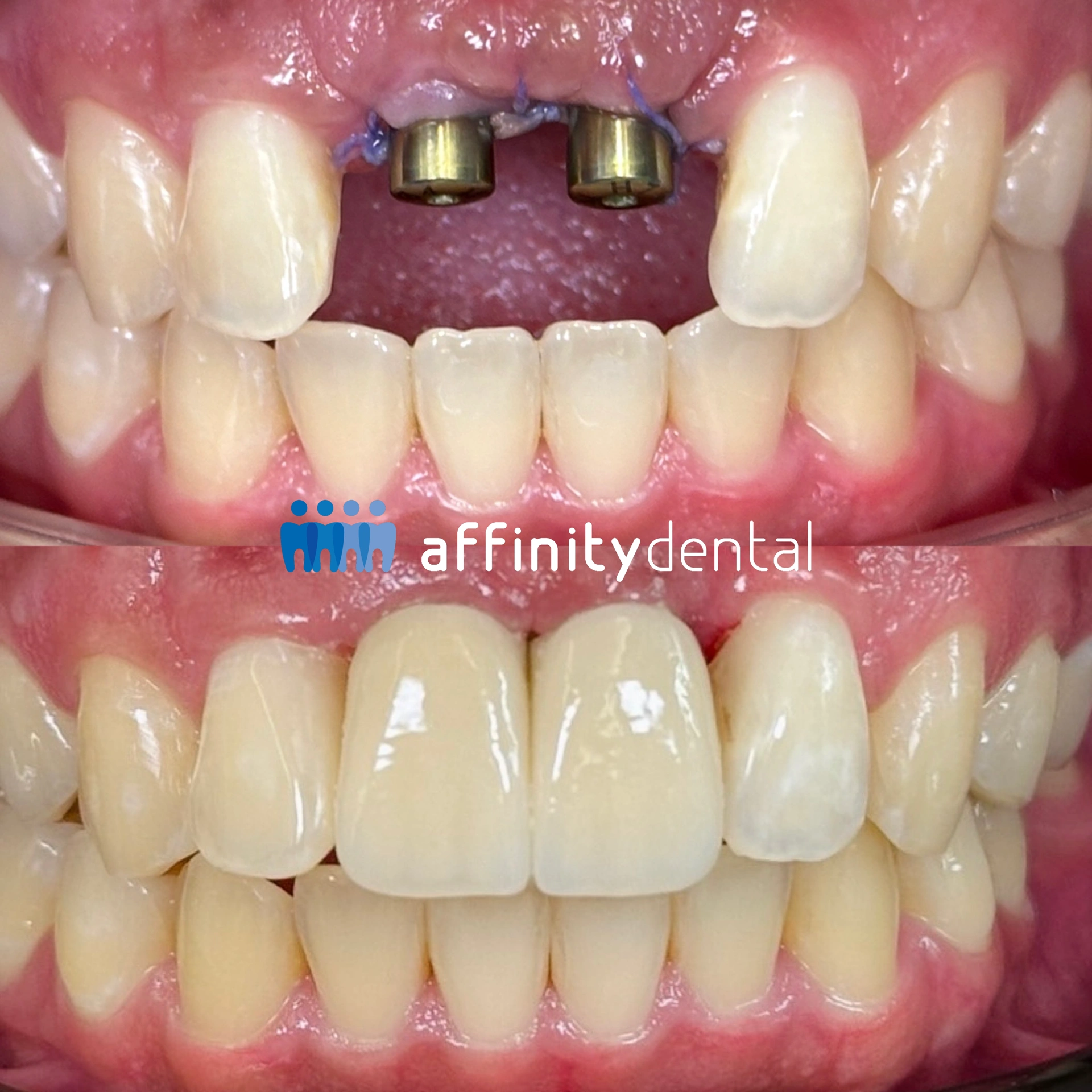
Looking Ahead: The Future of Osseointegration
Research continues to improve the process:
- Surface-treated implants that encourage faster bone growth.
- Biological enhancers such as platelet-rich plasma (PRP).
- Digital implantology for more precise placement.
These innovations aim to shorten healing times and make osseointegration even more predictable.
Final Word
Osseointegration may sound like a technical term, but it’s really your body’s natural way of making an implant part of you.
At Affinity Dental Clinics, we’ve seen thousands of implants succeed because of careful planning, surgical expertise, and advanced technology. With CBCT-guided surgery, bone grafting when necessary, and an in-house dental laboratory for precision restorations, we give every implant the best chance of long-term success.
Because without osseointegration, implants won’t last. With it, they can restore not only your smile—but your confidence, health, and quality of life.
